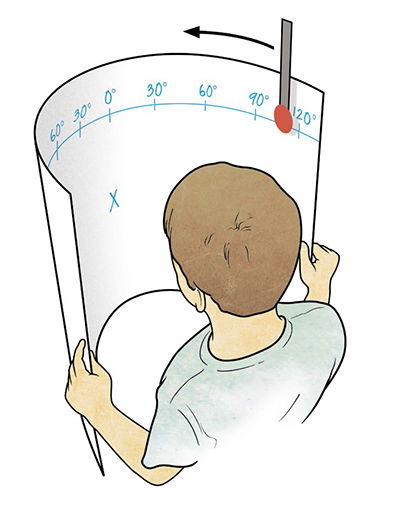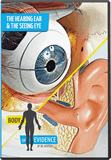In Living Color Experiment
Your eye’s complex ability to see color and motion points to the Creator. Even its limitations reveal His purposeful design.
From the roof, we watched fireworks explode over downtown Richmond, Virginia. My two daughters pointed and laughed with every flash of red and blue that sizzled into the sky. As the tempo of those Fourth of July explosions increased, their little hands couldn’t keep up with the symphony of colors and motion.
But their eyes? That’s a different story.
If you had no other evidence the world was designed (and you do—starting with the Bible), one look at all that goes into your ability to see color and motion would remove any excuse for believing it happened by chance. God’s design for the eye is that complex and beautifully crafted.
Photons (light particles) bounce off an object toward your eye. There, a lens focuses the light toward the retina at the back of your eye. The retina is a photon-gobbling surface that’s stuffed full of photoreceptor cells called rods and cones.
Your eye has quite a few of these rods and cones—about 100 million and 6 million respectively. Rods cover much of the retina, and they have a knack for seeing in dim light, especially for picking up motion in dim light. But they don’t do color.
For that, you need cones, which are concentrated in a small dimple near the center of your retina called the fovea. Cones do the heavy lifting for things like reading, tracking a baseball, and gazing at beautiful sunsets. You’ve got three types of cones that respond to different wavelengths of light: red, green, and blue. Your eye combines these three particular colors to make every color on the visible spectrum.
At first glance, the rods and cones appear to be in odd places. Rods are concentrated in your peripheral vision and cones are toward the center. So you sometimes have to look out of the corner of your eye to see things in a dark room, but you have to look directly at the words in a magazine to read them.
The fovea makes up only about 1% of your retina, but it uses up about 50% of your brain’s visual cortex (the vision processing center). So why did God design an eye that gives sharp focus in only one small area? Well, imagine for a moment that you could see everything in perfect clarity all at once. Talk about overload! God can handle all that information at once, but He designed us to focus on one thing—one face in the crowd—at a time.
The rods and cones don’t just detect color and motion; they turn the information into electrochemical signals that are then run through other parts of the retina that detect edges and shadows.
From there, all that information shoots into different areas of your brain that help you process the images, separating the foreground from the background, estimating distances and angles between different objects, and so on. All in the blink of an eye.
And, really, that’s just a small glimpse into how complex vision is. It gives you a whole new appreciation for Jesus’ ability to create vision in the beginning and restore sight to the blind many years later.
See for Yourself . . .

With a friend, test the rods and cones in your eyes to see their specialties.
Materials
- White poster board (28 inches x 22 inches [72 cm x 56 cm])
- Yardstick
- Marker
- Three nickel-sized circles of construction paper (1 red, 1 blue, and 1 green)
- Clear tape
- Three foot-long (0.3 m) sticks or rulers
- Notebook (to record results)
Procedure
Mark the very center of the poster board as 0º not far from the top. Use the yardstick to draw a straight line through that mark all the way to the left and right edges of the poster board. Then mark every inch (2.5 cm) on the line. Each mark will represent 10º of vision when you start the experiment. Write 30º at the third mark, 60º at the sixth mark, and so on, both to the left and to the right. Next, make a large X in the center of the poster board directly below 0º.
Tape a colored circle onto each of the three rulers (or sticks).
Have your friend sit down and hold the poster board in front of them so that they can look straight at the X. Next, have them bend the poster board around their head in an arc with the ends lining up with their ears. While your friend focuses on the X, choose one of the sticks with a colored circle on it (don’t tell them which one). Start at 120º and move the stick slowly toward 0º. Have them tell you when they can first see the circle and when they can tell what color it is. Do different colors appear at different places?
Now trade places and see how you do on this test, or test other friends. How similar are the results?
Dim the lights. How does that affect when you can see the colors?
Answers Magazine
May–June 2017
The greatest archaeological mystery of our time may have answers from an unexpected source . . . volcanic rocks.
Browse Issue SubscribeRecommended Resources

Answers in Genesis is an apologetics ministry, dedicated to helping Christians defend their faith and proclaim the good news of Jesus Christ.
- Customer Service 800.778.3390
- © 2024 Answers in Genesis






